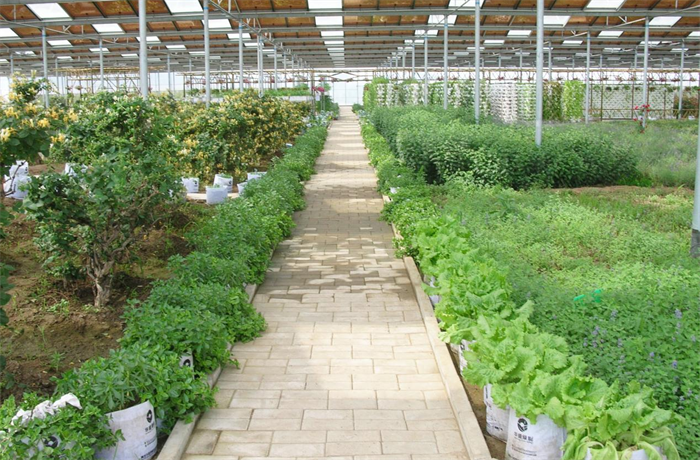0102030405
How to achieve high efficiency in greenhouses!
2024-05-06 00:00:00
With the arrival of summer, tomatoes, cucumbers, eggplants and other vegetables grown in greenhouses have reached the peak of fruit and vegetable harvest. At this time, fruits and vegetables grow rapidly, have larger leaf areas, have strong transpiration, and require large amounts of water. At this time, greenhouse management is particularly important, as it is related to quality and yield. These five aspects should be paid attention to when growing vegetables in greenhouses in summer.
1. Adjust a suitable growth environment
1. Temperature: For heat-loving crops such as tomatoes, the temperature should be controlled at 23-30℃ with sufficient sunshine during the day, 23-26℃ from 2:00 pm to sunset, and 18-20℃ at night. The temperature for celery and other leafy vegetables is 20 to 25°C during the day and 10 to 12°C at night. On cloudy days, the daytime temperature should drop by 3-5°C. Generally speaking, the temperature difference between day and night should be maintained at 10-13℃.
2. Air humidity: Chili peppers like a humid environment. On sunny days at noon, water should be sprinkled or micro-sprayed to increase air humidity. Tomatoes and eggplants prefer dry conditions. By reducing watering, the humidity should be controlled between 45% and 60%. Reducing air humidity can not only ensure the normal growth of crops, but also prevent the spread of harmful organisms and avoid the occurrence of pests and diseases.
3. Light: At noon when there is sufficient sunshine, too much sunlight will have an adverse effect on crops, reduce yield and quality, and cause physiological damage such as withering of flower buds. On sunny days, from 11 am to 3 pm, it is best to cover the roof with 60% to 70% shading rate.
2. Harvest in time
Delayed harvest will not only affect the growth of fruits and vegetables, but also reduce their quality. To ensure the quality and taste of the product, be sure to harvest on a sunny morning.
3. Take care of plants in time
1. Beat the leaves
Remove old leaves, yellow leaves, diseased leaves and plant branches to promote ventilation and light transmission and reduce nutrient consumption. Tomato and cucumber plants usually maintain 12 to 16 functional leaves, and eggplant and pepper plants maintain 30 to 40 functional leaves.
2. Pinch the tip at the right time
When the tomato reaches its intended ear, it needs to be pinched. Usually, each plant has 4-6 ears, leaving 2-3 leaves on the top and picking off the tops.
4. Fruit thinning
Remove excess flowers and fruits on tomato and pepper plants as soon as possible, as well as deformed fruits, too large or too small fruits, and keep the fruit shape regular, so that the fruit is uniform and the market rate is high.
5. Scientific watering and fertilization
Water scientifically according to weather, crop conditions and soil moisture. Tomatoes and eggplants are usually watered every 5-8 days. Water cucumbers and peppers every three days to avoid excessive drought or overwatering. Top dressing is generally stopped thirty days before the seedlings are pulled out, and foliar spraying can quickly replenish nutrients.













